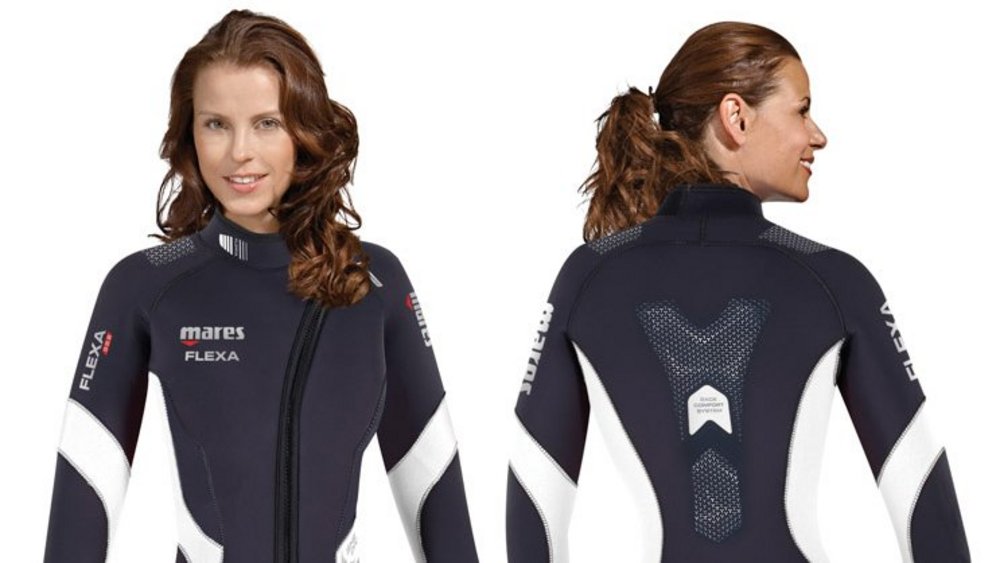Wetsuits - everything about materials, function and models
What belongs to diving like the Sechseläuten to Zurich? That's right - the wetsuit. At least that's what you see in films and on television. And for most dives it is indeed advisable to put on a wetsuit. Especially if you want to dive a few metres deeper and explore the underwater world there, you will be grateful for a wetsuit. We have compiled everything you need to know about wetsuits, the different types, designs and functions...
What is a wetsuit?
Let's start off easy: wetsuits are not only worn for diving, but also for surfing, wakeboarding, kayaking and stand-up paddling. They are made of neoprene foam and ensure that you don't get cold even if you spend a long time in cool water. By the way, neoprene is not only the material, but even a protected brand name of the American chemical company DuPont. In concrete terms, neoprene is a type of synthetic rubber that was first used in the automotive industry before people came up with the idea of making suits out of it. The special thing about the material is that there are many small gas bubbles in the foamed material, which are distributed evenly and thus provide the insulating effect. Putting on a wetsuit is not that easy - at least for the inexperienced. At first, it's a combination of pulling, tugging and bouncing for everyone until the piece finally fits. But that's the right thing to do, because wetsuits have to fit tightly so that the warmth is not lost...
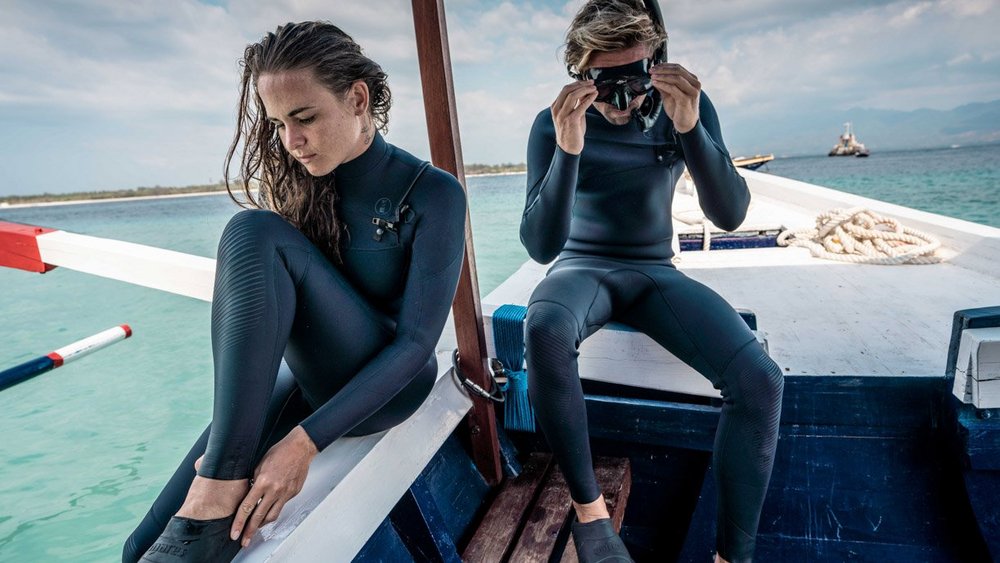
How does a wetsuit work?
Neoprene suits are divided into wet suits, semi-dry suits and dry suits. Wet suits are not waterproof, which is perfectly OK, because the water floods all the gaps between the body and the suit and gradually you transfer your body heat to the water, which in turn warms you. Dry suits, which are filled with an insulating gas, ensure that the diver has no contact with the water at all.
Semi-dry suit for particularly cold water
The semi-dry suit is, as you can imagine, a hybrid of the two. In contrast to the "dry suit", the semi-dry suit is a "wet suit". The diver does not get wet, but just slightly damp. Most semi-dry suits have gas-tight zips and a thickness of 5 to 7 mm neoprene. The sealing cuffs also inhibit water circulation. If the semi-dry suit fits very tightly, this is an advantage because it means that little water reaches your skin. However, thanks to the double cuffs on the wrists, ankles and neck, the water that finds its way into the wetsuit hardly comes out of the suit again and is thus warmed up more than the water between the wet suit and the skin. Incidentally, this is also the reason why the semi-dry suit is popular for dives in cold water.
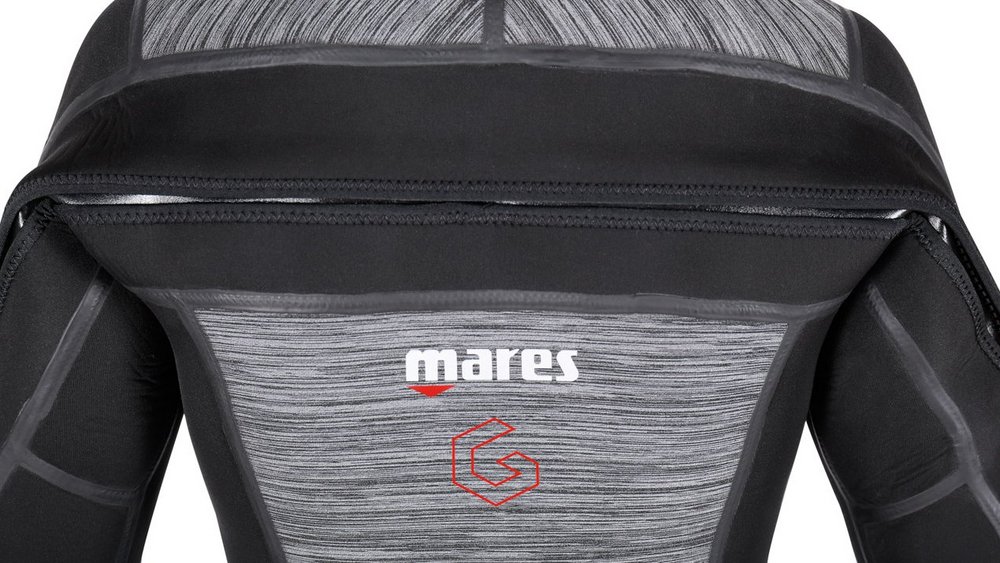
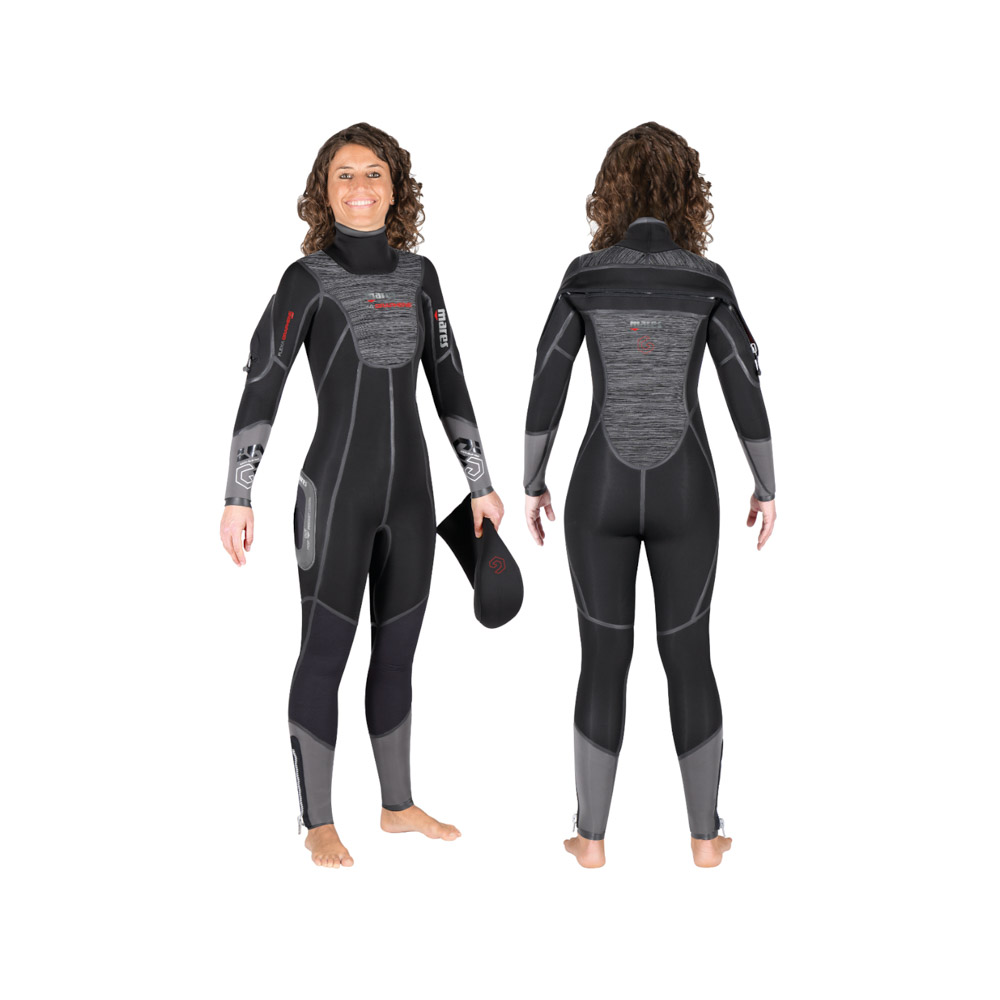
Bright colours in wetsuits? Rather no.
Have you ever noticed that most wetsuits are in dark tones. This is actually not only a design decision, but also brings an additional warming effect. The surface stores any sunlight, protects your skin from sunburn and warms you additionally. It also makes sense to use a wetsuit in warmer areas, because it protects you from sea urchins or rock formations, for example. By the way, dry suits are more suitable than wet suits for exploring in waters colder than 12°C.
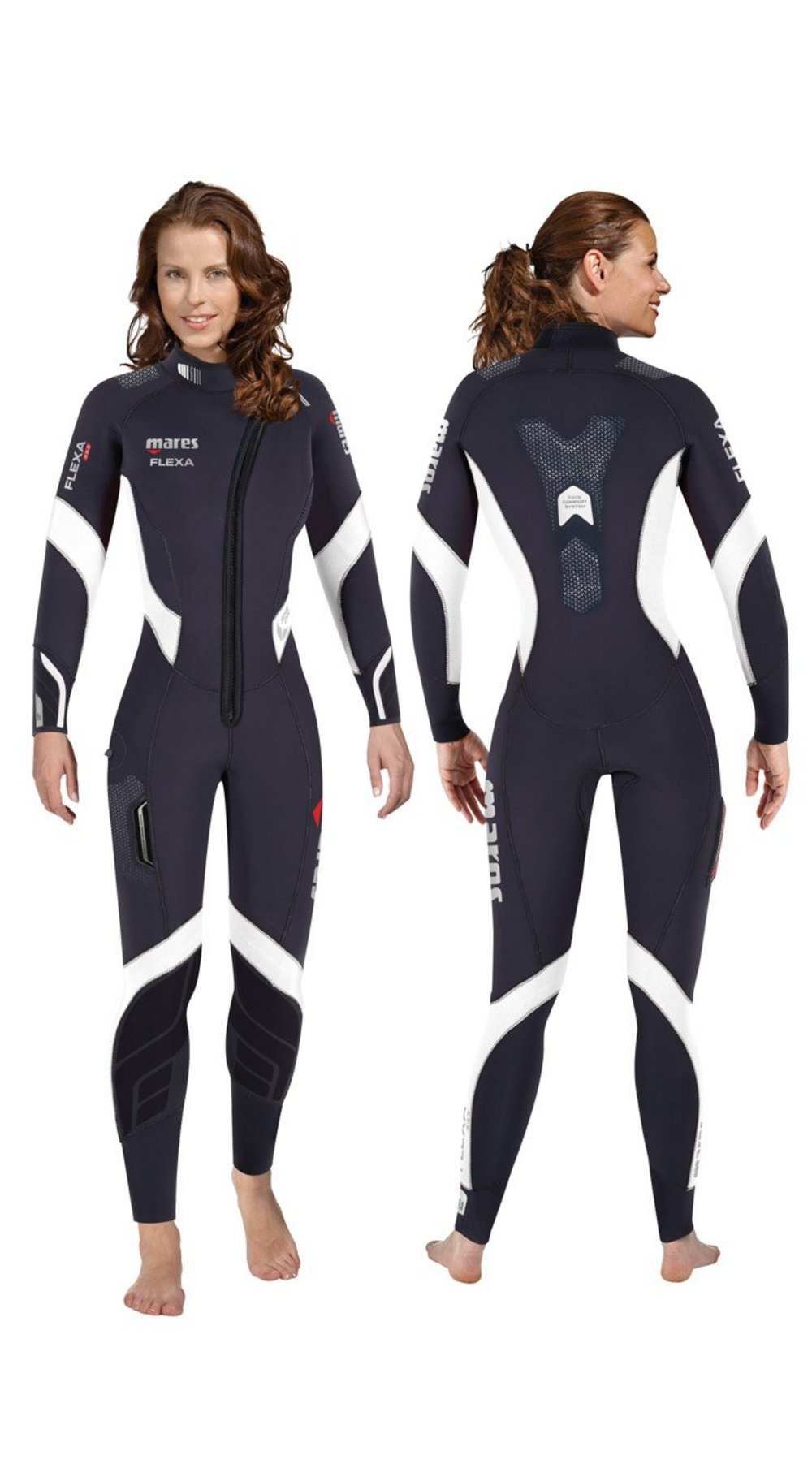
Which wetsuit for which water temperature?
Are you a frostbite or a heater? Wetsuits come in different thicknesses and lengths. You can choose between long and short wetsuits. In cold water you should opt for a long wetsuit, in high temperatures, for example in the Caribbean, a shorty will do. Here's a tip for beginners: if you already have a diving licence and are therefore the proud owner of a logbook, you should note the thickness and length of the suit, the amount of lead and the tank size when you rent equipment. This is because both the tank and the suit provide buoyancy, so another dive centre can quickly put together the right equipment for you so that you can really dive.
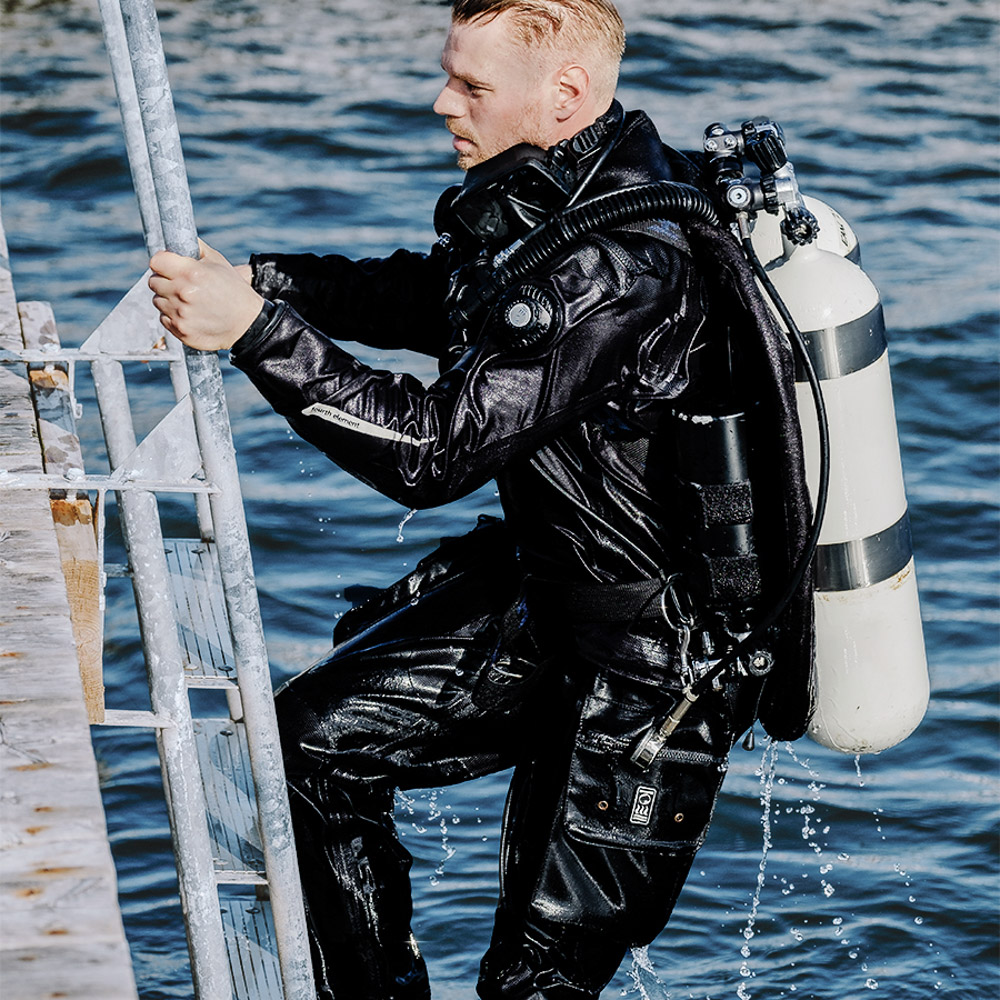
What types of wetsuits are available?
If you are looking for a suitable wetsuit, you are probably spoilt for choice. Should the zipper be at the back or at the front? If you're not afraid of entering colder waters, it's also worth taking a look at wetsuits with integrated hoods. In addition to the wetsuit, you can also wear diving gloves and boots for all-round cosiness. This way, you can explore this other world underwater in complete peace. Of course, diving suits are available in different designs: in dark blue, anthracite, black, with pattern applications, with or without knee patches. If you take your time to compare, you're sure to find the right wetsuit for your underwater trips.
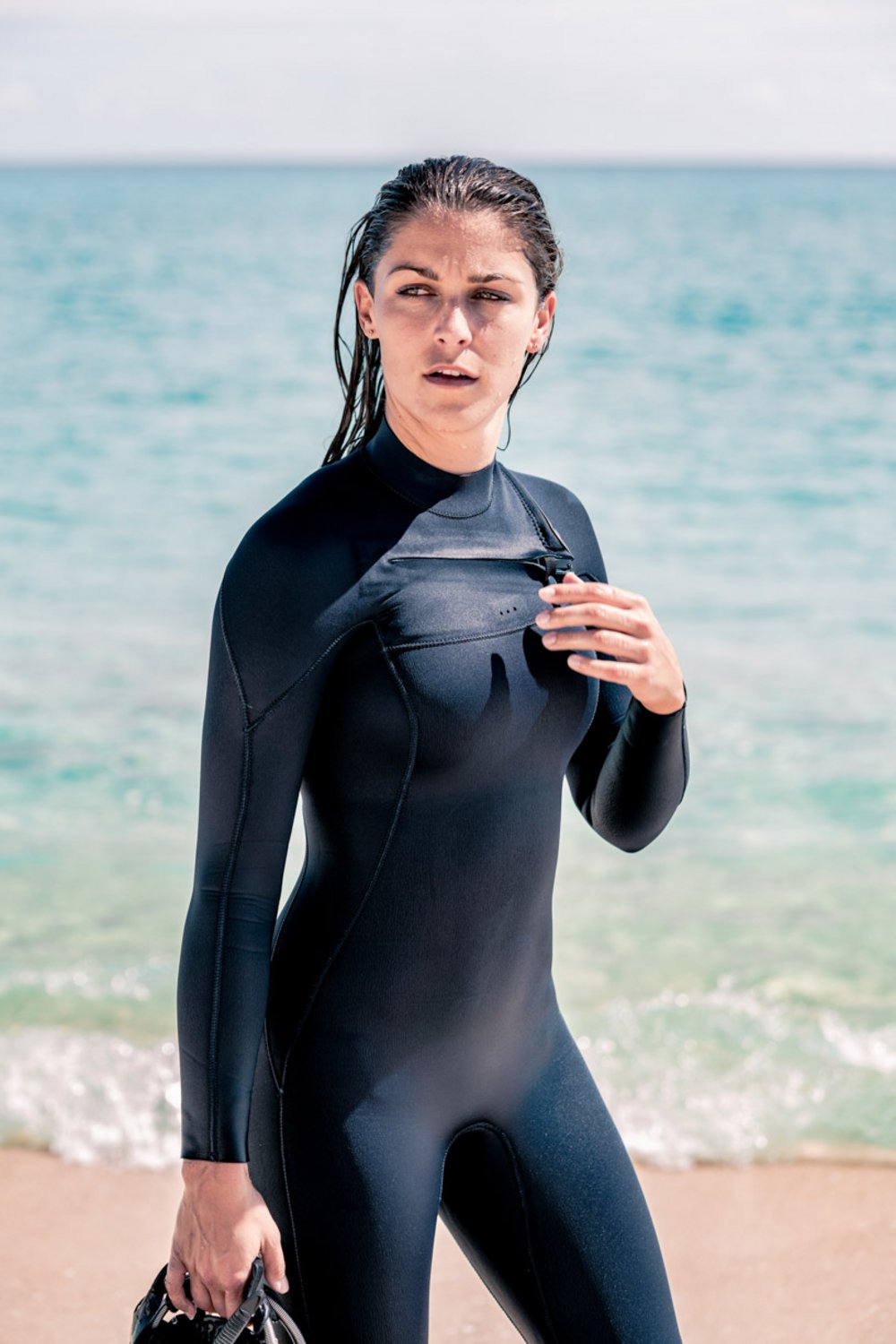
Environmentally friendly alternatives to neoprene
Diving without a wetsuit? In particularly warm temperatures, this is possible without any problems. But somehow it is part of the fun of diving, squeezing into the wetsuit and peeling out again after the dive and washing it thoroughly to prevent salt build-up. If you're looking for an eco-friendly alternative to neoprene, you can also get a wetsuit made from natural rubber and recycled materials. The Yulex Pure rubber used by Fourth Element, for example, is derived purely from plants and is therefore much more environmentally friendly - and this is consequently part of responsible diving, as are the rules about not touching anything underwater and not taking anything from the underwater world with you. Got it? Then put your thumb and index finger together and let's dive!


